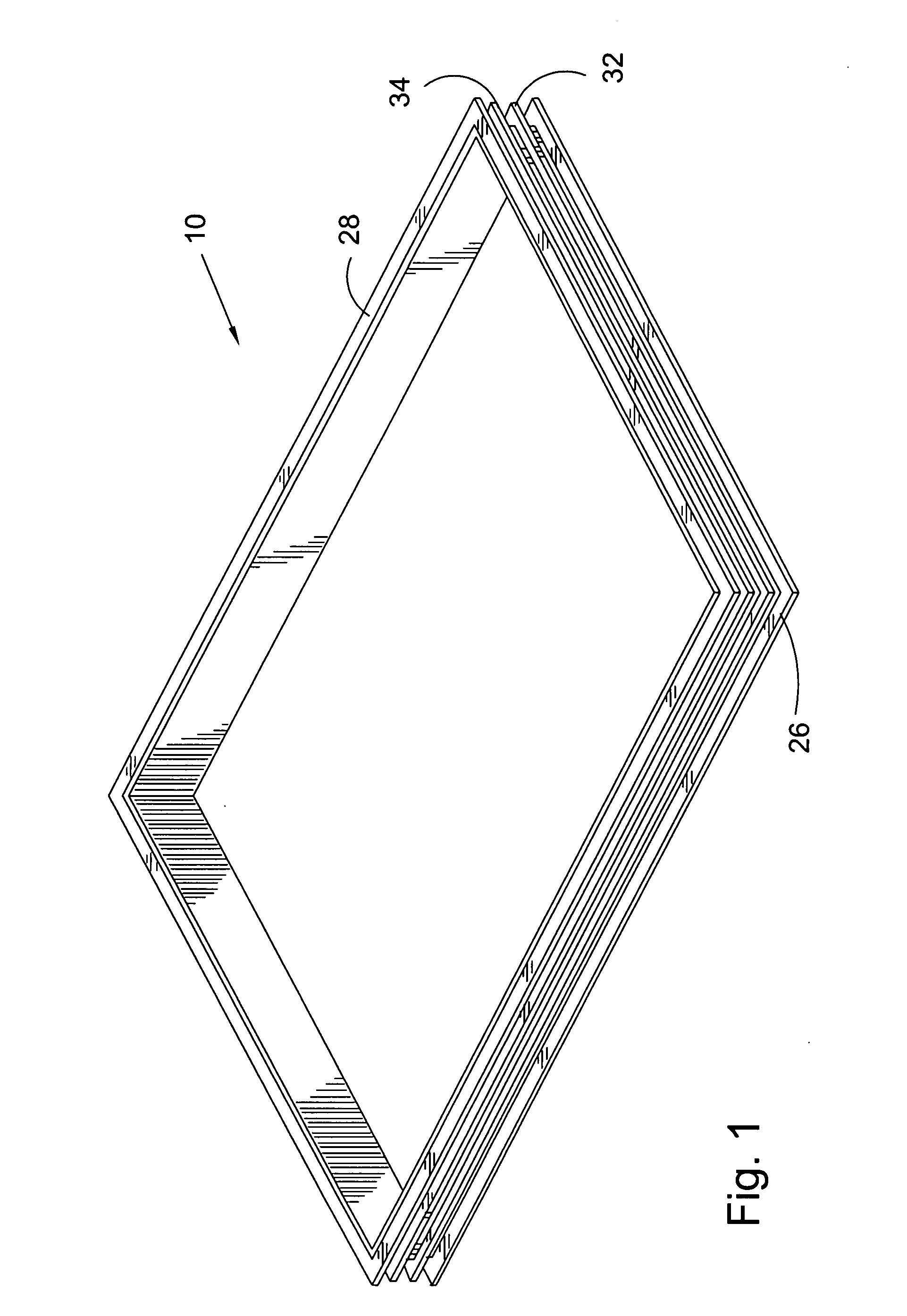Apparatus and method of fabricating a door
a technology of apparatus and door frame, applied in the field of doors, can solve the problems of increasing the final cost of the door frame, increasing the cost of the finished door frame, so as to minimize labor and waste, reduce the cost, and facilitate the manufacturing
- Summary
- Abstract
- Description
- Claims
- Application Information
AI Technical Summary
Benefits of technology
Problems solved by technology
Method used
Image
Examples
first embodiment
[0030]Adverting now to the figures, FIG. 1 shows a perspective view of present invention door light insert 10, while FIG. 2 shows a perspective view of door light insert 10 during installation between first and second door skins 12 and 14, respectively. FIG. 3 shows a cross sectional view of door light insert 10, FIG. 4 shows a cross sectional view of completed door 16 including door light insert 10 after fabrication and FIG. 5 shows a perspective view of completed door 16 including door light insert 10. The following discussion is best understood in view of FIGS. 1 through 5.
[0031]Door light insert 10 is used for fabrication of door light 18 in door 16. Door 16 comprises a pair of interlocking and oppositely disposed door skins 12 and 14 which, when assembled, form cavity 20 therebetween. Door skins 12 and 14 further comprise door light openings 22 and 24, respectively. During assembly of door 16, door light opening 22 is registerably aligned with opposing door light opening 24. In...
second embodiment
[0032]In some embodiments, insert 10 further comprises secondary flanges 32 and 34 positioned substantially parallel to and between engagement flanges 26 and 28. Secondary flanges 32 and 34 are substantially encapsulated in foam 30 within cavity 20 during fabrication of door 16. In some of these embodiments, secondary flanges 32 and 34 are equal in length but shorter in length than either of engagement flanges 26 or 28. In other words, secondary flanges 32 and 34 have first lengths 36, while engagement flanges 26 and 28 have second lengths 38, and first lengths 36 are less than second lengths 38. In yet other embodiments, engagement flanges 26 and 28 each comprise offset engagement surfaces 40 and 42, respectively, so that outer interfaces 44 and 46 between first and second door skins 12 and 14, respectively, and insert 10 are substantially flush. Outer interfaces 44 and 46 are created by the combination of outer surfaces 48 and 50 of door skins 12 and 14, respectively, and steps 52...
PUM
| Property | Measurement | Unit |
|---|---|---|
| ninety degree angles | aaaaa | aaaaa |
| pressure | aaaaa | aaaaa |
| length | aaaaa | aaaaa |
Abstract
Description
Claims
Application Information
 Login to View More
Login to View More - R&D
- Intellectual Property
- Life Sciences
- Materials
- Tech Scout
- Unparalleled Data Quality
- Higher Quality Content
- 60% Fewer Hallucinations
Browse by: Latest US Patents, China's latest patents, Technical Efficacy Thesaurus, Application Domain, Technology Topic, Popular Technical Reports.
© 2025 PatSnap. All rights reserved.Legal|Privacy policy|Modern Slavery Act Transparency Statement|Sitemap|About US| Contact US: help@patsnap.com



